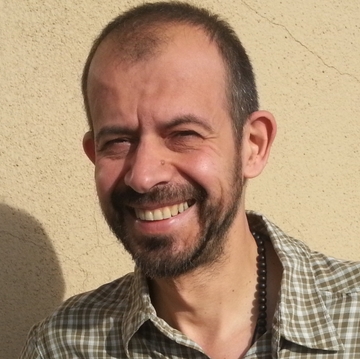Preparing for Disaster: UNM Hospital Participates in Region-Wide Emergency Training

How Many Rare Diseases Are There?
UNM Data Scientist Publishes Study Underscoring the Need for Better Definitions
Some diseases are like black swans. They occur so rarely that many physicians never encounter them in their clinical practice, complicating efforts to treat them.
How many rare diseases are there? According to a new study co-led by University of New Mexico data scientist Tudor Oprea, MD, PhD, no one really knows - and that's a problem, because it's likely that many rare disease patients do not receive appropriate medical care.
In a commentary published this week in Nature Reviews Drug Discovery, a high-impact research journal, Oprea and colleagues from the U.S., Australia, France and Germany point out that as much as 10 percent of the world's population suffers from a rare disease, which translates into hundreds of millions of people.
"You have thousands and thousands of papers a year related to rare diseases, yet very few translate into cures," says Oprea, professor and chief of the Translational Informatics Division in the Department of Internal Medicine.
A big part of the problem has to do with definitions, the authors argue, because the inability to reliably diagnose a rare disease hinders researchers' ability to develop treatments for it.
In the U.S., the Orphan Drug Act of 1983 defines a rare disease as one affecting fewer than 200,000 people. In the European Union, legislation introduced in 2000 defines it differently: when fewer than one in 2,000 people is affected.
And, the authors point out, a disease that is considered "rare" in the general population might be relatively common within a subgroup - examples include Tay-Sachs disease among Ashkenazi Jews and sickle cell disease among people of sub-Saharan African descent.
Another complicating factor is that the terms used to define diseases are often inconsistent and imprecise, and they sometimes vary from country to country. For example, "breast cancer" actually encompasses a variety of tumor sub-types with unique genetic signatures and different optimal treatments, Oprea says. Should it be classified as one disease or many?
Estimates of the number of rare diseases usually settle in the range of 7,000, the authors report. But their recent analysis of an international disease classification database known as the Monarch Disease Ontology - or Mondo - suggests it could be as much as 50 percent higher.
"The Mondo project is the first computer-assisted human curation process to bring together separate efforts in the rare disease community in order to catalog and annotate all rare diseases, regardless of country or disease type," Oprea says.
Improving care for patients with rare diseases requires reaching consensus on the physical, genetic and environmental characteristics of each condition, but overlapping terminologies and models makes that difficult. The authors are calling upon the World Health Organization, the U.S. Food and Drug Administration, the European Medicines Agency, the National Academy of Medicine and other entities, to adopt a unified definition of rare diseases.
"We encourage the community to get together and come up with more precise rare disease definitions," Oprea says. "There needs to be a forum to discuss this and dedicated funding mechanisms to address it."